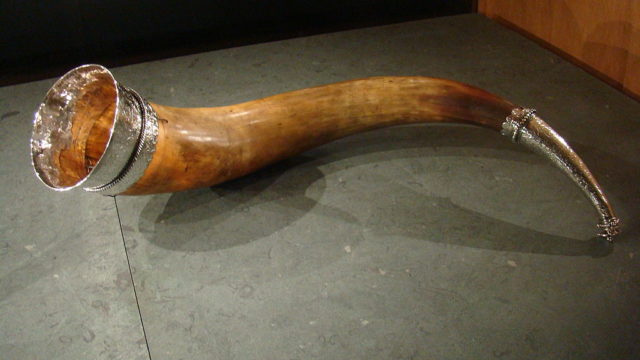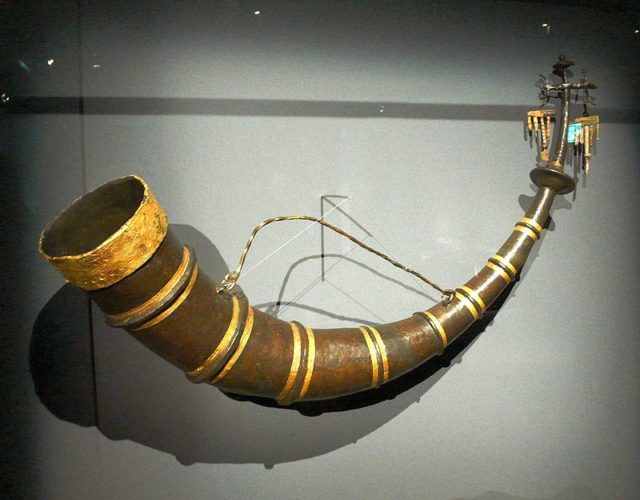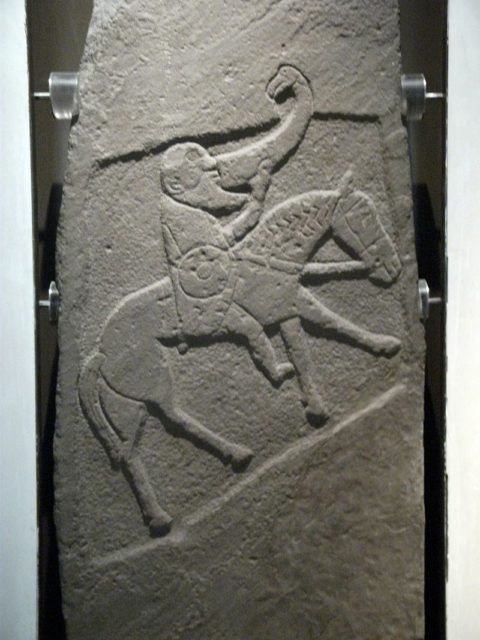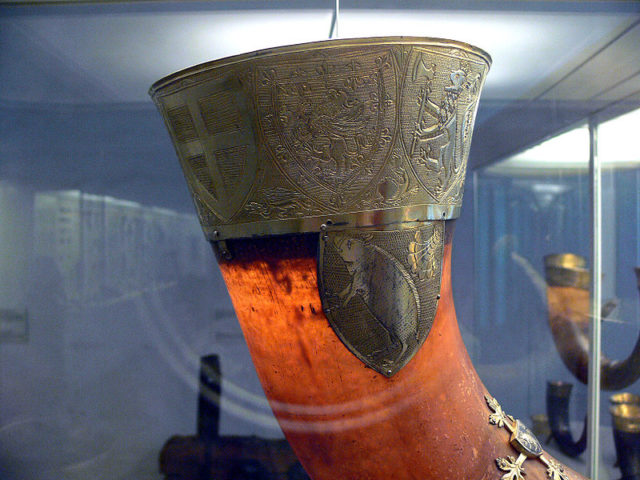Drinking horns, sometimes referred to as rhyta, have been popular for thousands of years. They are hollowed-out horns of cloven-foot mammals such as deer, cows, antelopes, and sheep—just to name a few. Sometimes they were made of horn-shaped clay or metal and were used in place of actual horns. A late Archaic Greek vase is decorated with a design of Dionysus and a satyr using drinking horns.

They were used for ceremonial rituals throughout the Middle Ages and the Early Modern period in some parts of Europe, mostly in Germanic cultures and in the Caucasus, especially the border between Europe and Asia near the Black and Caspian seas.

The Thracians (European tribes from around Bulgaria) and Scythians (Eurasian nomads in the 9th century BC) were known for drinking from horns. Xenophon, an ancient Greek philosopher, and historian, wrote about his transactions with the Thracian leader Seuthes and proposed that drinking horns were an integral part of Thracian society. The Greek historian Diodorus gives an account of a banquet prepared by the Getic chief Dromichaites, from the area of Romania and Bulgaria, for Lysimachus, the successor of Alexander the Great; Diodorus describes the use of drinking vessels made from horn and wood.

The wealthy Scythians also used horn-shaped rhyta made from precious metals. A 5th century BC rhyton in the shape of a winged horse made of gold and silver was found in 1982 in Ulyap, Adygea, and is housed at the Museum of Oriental Art in Moscow.
In his archaeological survey of Scythian drinking horns, Russian author M.I. Maksimova identified two types of rhyta—one curved and one smaller with a slight bend. The smaller type was identified by Maksimova as horns from the Auroch, the forerunner of today’s domesticated cattle. These items were found mostly in warriors’ graves. The drinking horns traveled along with human migration and were found in Central Europe in the Iron Age.

Some early Celtic examples are known, particularly the remnants of a huge gold-banded horn found at the Hochdorf burial site in Switzerland. Natural horns fashioned from animals decay quickly and leave nothing behind but the metal pieces have been found preserved in archaeological digs.

The Germanic peoples fashioned glass drinking horns. A 5th century Merovingian horn found at Bingerbrück, Rhineland-Palatinate, is made from olive green glass and is found at the British Museum in London. A blue glass drinking horn from Sutri, just outside of Rome, is also found in the British Museum.
After the discovery of the first horns in 1639, Christian IV of Denmark restored them into functioning drinking horns by adding a rim, lengthening the narrow end, and making it watertight with a screw-on pommel. They were the most outstanding specimens of Germanic Iron Age drinking horns known from the 17th and 18th centuries, but they were lost in 1802.
The British Museum also has a pair of 6th century Anglo-Saxon drinking horns recovered from a royal gravesite at Taplow, Buckinghamshire. The two were made from Auroch horns and had silver-gilt mounts.

Drinking horns were used in pagan Germanic societies beginning in the Iron Age and extending into the Viking Age in Scandinavia. Parts of elaborate drinking horns have been found in women’s graves, possibly indicating female warriors.

In the Prose Edda, Old Norse literature written in Iceland in the 13th century, Thor unknowingly drank from a horn that contained the water from all the seas. Rhyta are also found in the Old English epic poem “Beowulf,” which took place in Scandinavia. Of the Norwegian drinking horns preserved from the Middle Ages, most have metal mountings, but the horns are smooth and plain except for the occasional carvings on the surface.

A vessel from late-1500s southern Iceland has elaborate carvings of horse-drawn chariots and animal figures. Old Viking horns are simple, with silver bands and feet. The Nordic Museum in Stockholm, Sweden, houses a simple horn sumptuously decorated in gold with a single supporting leg realistically fashioned to look like a bird’s foot on an elaborately carved base. The narrow end has a cap carved to look like a bird’s head.
Modern wine bags, popular in the 1970s and made from leather, imitate the shape of old drinking horns, but the mouthpieces are made from black plastic, with a cord attached to the screw-on cover and another cord attached for carrying the bag on one’s shoulder.
